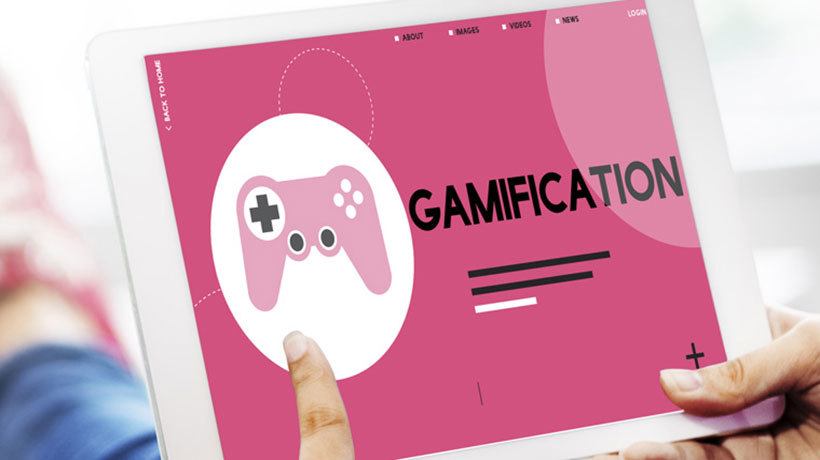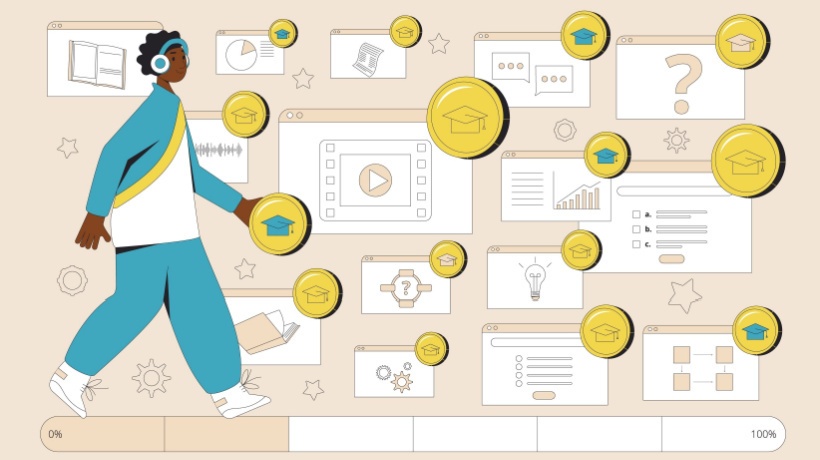Gamification In Corporate Training
Without learner engagement, even the best laid learning strategies are doomed to fail. Learner engagement in corporate training is one of the biggest problems for L&D teams across the world. Classic models of engagement no longer seem to work in today’s world, which is dominated by extreme multitasking and increasing distractions, where learners expect heightened stimulation, feedback, and rewards.
To resolve the issues posed by changing learner demographics and technology and to fit into an increasingly competitive landscape, more and more companies are turning to gamification.

While "games" in corporate training may seem like a square peg in a round hole, they are in fact the one place where learners can find true engagement.
In this article, we will look at 5 reasons why gamification is a "must" for today’s corporate training.
What Is Gamification?
To many, the term gamification may suggest the use of actual games; this is not true. At its core, gamification is the application of game mechanics to learning (a non-game context) to enhance learner participation and engagement.
In a gamified learning scenario, all or some of the learning activities use game elements such as leaderboards, scoring systems, badges, and levels to motivate the learner to solve problems.
5 Reasons Why Gamification Is A Must For Corporate Training
Here are 5 reasons why training managers simply cannot ignore gamification in their corporate training strategy.
1. It Is The Language Of The New Generation
Millennials and Gen Zers today constitute almost a third of the total U.S. labor force. Thanks to the constant bombardment of information and media content via the internet and social media, they are also the most distracted and attention-deficit lot. As a result, they have a tendency to burn out, experiencing physical, emotional, and mental exhaustion.
Having said that, millennials stand out from the previous generation of learners in terms of their:
- Competitive spirit
- Tendency to communicate visually (via icons/emojis and images)
- Appetite for short bursts of content, instant gratification, rewards, and recognition
- Demand for continuous, rapid feedback
Gamification easily satisfies these learning preferences by providing:
- Enhanced learning experiences
Previous generations went through traditional training that focused largely on the content, with videos, slideshows, and manuals. A gamified course, on the other hand, appeals to the new cohort’s urge for meaningful content and instant gratification by:- Adding a meaningful narrative to the learning experience
- Challenging them with learning activities
- Rewarding them when they reach defined performance goals
- Continuous learning and instant feedback
Although millennials prefer self-directed learning, they also crave feedback, and continuous feedback at that. They want to know about their progress and achievements. With gamified courses, learners are given instant feedback on their understanding. They can view their performance metrics against their KPIs on the personalized dashboard. They can also see how well they are performing compared to their peers. This is a magic pill for millennials because such rapid feedback allows them to identify their learning gaps and go for extra training/coaching to fix it.
2. It Promotes Measurable Behavioral Change/s In Learners
The purpose of any training is to bring about behavioral changes in employees (i.e., replacing undesirable behaviors with those that can lead to better performance). And any behavioral change needs motivation, ability, and a trigger.
- Motivation
Let’s say a sales rep wants to (is motivated to) upgrade their skillset (selling skills, customer objection handling, etc.) - Ability
Are they able to learn the new skills? Do they have everything they need to learn the new skills? - Trigger
Is there a cue or a reminder or a reward that’s prompting them to take action and learn the new skill?
It’s only when these three converge that any behavioral change occurs. The trigger is what’s missing in most training. Gamification takes care of this by rewarding learners every time they complete a task. Game elements such as points, badges, and scoreboards act as triggers that push learners to get over whatever is holding them back from learning. In other words, each point—or the anticipation of more points—is like a cue for them to act, a Call-To-Action, if you will.
For example, in scenario-based gamified courses, the work environment is brought into the learning. Learners progress through work-related scenarios, making decisions and taking actions as they go. They have to practice the behaviors you want them to demonstrate. Every right action/decision is rewarded with points or promotes them to the next level. A reward system like this takes them toward the behavioral changes the course is trying to lead them to.
Note: Along with rewards, what’s also important in affecting behavioral changes is presenting the content not as a passive, click-next eLearning course but as a narrative/story. Gamified courses often facilitate storytelling, and this enables learners to relate to the characters and the content in a meaningful way.
3. It Makes Employee Onboarding Fun
Onboarding new employees can be an expensive and time-consuming process, especially with the traditional face-to-face approach. The importance of human interaction in learning cannot be over-emphasized, but there are a few challenges with this approach:
- Owing to busy schedules and shifting priorities, managers may not always be able to allocate the required time to the new hires. This can lead to onboarding programs being extended and delayed.
- There may be an information overload on the new employee/s in the first few weeks, affecting their learning proficiency and overall morale.
To solve these problems with traditional ways of onboarding, many companies are opting for a gamified onboarding process. Gamifying the onboarding material can increase knowledge, new hire engagement, and retention.
- Motivate new hires by rewarding their progress and offering a certificate on successful onboarding.
- Turn a mundane learning activity, such as visiting different departments and meeting the heads, into a story-based game, complete with goals and levels. Promote them to the next level only on the successful completion of a certain number of tasks.
- Incorporate game-based assessments to ascertain if the new hire has truly reached their goals or not, and to challenge their knowledge.
- Put up leaderboards on your LMS to motivate learners to improve their performance to secure a rank in the leaderboard.
As gamification is applicable to all kinds of workplace training (sales training, product training, customer service training), you can really make learning fun for any kind of training.
4. It Provides A Framework For Microlearning
Microlearning is a training methodology using small nuggets of learning, taking no more than 5-7 minutes to complete. It’s a learning strategy that is highly appealing to modern learners, especially the millennials and Gen Z learners.
Instead of focusing on macro goals, gamification—like microlearning—focuses on short, achievable goals, and rewards learners for achieving these goals.
When combined with mobile-friendly microlearning, gamification takes learning to a whole new level—short, topical training content that feels like smartphone games… not work! You can use gamified microlearning activities such as stand-alone micro-game nuggets and gamified assessments for formal training, performance support (Just-In-Time job aids), and/or to reinforce learning post-training.
The combination of gamification and microlearning fosters curiosity, motivating learners to finish tasks against the clock in return for rewards. It also allows companies to work with any subject matter, including the most tiresome and boring ones (risk prevention, compliance, regulations).
5. It Improves Employee Productivity And ROI
When it comes to rolling out a new training program, the one question that nags all training managers is how good—or bad—is its Return On Investment (ROI).
Because of offering better learning experiences, higher knowledge recall and retention, and promoting behavioral change, gamification promotes significant performance gains for the organization. The more employees are motivated to complete their learning journeys and upgrade their skills, the more equipped they will be to tackle challenging tasks at work. This in turn improves overall productivity and delivers results and revenue for the organization.
Concluding Remarks
Motivating and engaging their workforce in training is a challenge for all organizations. Gamification can solve these challenges by using game elements in non-game settings to create learning experiences that motivate and engage learners. This not only drives high learner engagement in new-age learners, but also allows organizations to stay in the competition, drive better business results, and achieve a healthy ROI.
Download The Perfect Balance Between Microlearning And Gamification and discover how gamification brings engagement to corporate training. Also, join the webinar The Ultimate Guide To Implementing Microlearning to find out how microlearning can boost learner engagement!
References
- 7 Terrific Strategies to Improve Learner Engagement in eLearning
- 4 Common Misconceptions of Gamification Dispelled
- Converting Complex Flash Interactivities to HTML5: Can Storyline Do It?
- All about Using Scenario-based Assessments in Online Learning
- 5 Tips to Spice Up New Hire Onboarding Through eLearning
- 3 Reasons to Use Confidence-based Assessments in eLearning
- Microlearning Design: 7 Must-Have Characteristics









